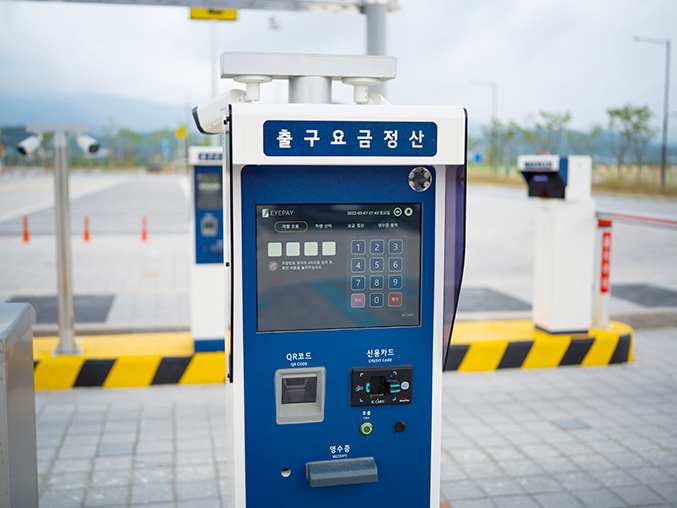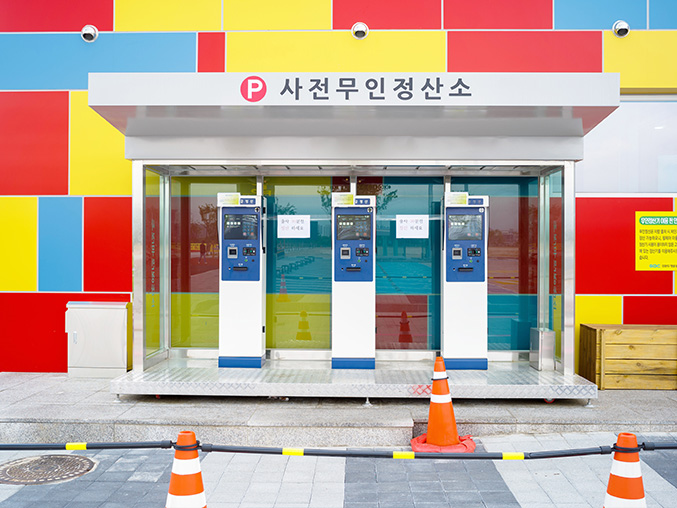ASUS IoT Tinker Board S accelerates smart-parking transformation


Design
Compact design with IoT connectivity support for easy system integration and deployment

Scalability
Enable cloud-based AIoT solution for data security and real-time management

Quality
Built to deliver reliable and stable operational performance
Our Customer
Silicon Bridge is a technology company that innovates semiconductor and cloud technologies. Established in 2015, it is built on its founders’ decades of engineering experience. The company develops and supplies systems and platforms that combine the Internet of Things (IoT), cloud, big data, artificial intelligence and semiconductor design — fields all considered to be at the heart of the fourth industrial revolution, or Industry 4.0.
When Silicon Bridge found itself seeking a low-power, high-performance solution for its next-generation parking-control systems, it turned to ASUS IoT and the remarkable Tinker Board S single-board computer (SBC).
The Problem
Bulky and hard-to-manage existing systems
The need to control and manage car-parking resources in urban areas is a well-understood and widespread requirement. The problem is not new, and traditional systems can be effective. However, traditional systems are deeply labor-intensive, requiring considerable human resources and input — from manned entry and exit booths to foot patrols for payment confirmation and enforcement.
That’s why forward-thinking towns and cities around the world are increasingly adopting digital solutions to enable unmanned entry and exit controls, and automated payment systems. These, too, have proved effective but they have also brought with them new problems.
Many existing unmanned control and fee-payment consoles incorporate a full-size PC, designed through necessity to operate autonomously. The need to integrate traditional computing hardware means such units tend to be bulky. As well, when something goes wrong, system administrators — often situated remotely — might not be immediately alerted to the breakdown. Worse, as many such systems store data locally, physical damage to the parking console could lead to a loss of information critical to the processing of payments — or even result in vehicles being unable to enter or exit the parking facility.
The Solution
A compact cloud-based solution, powered by ASUS IoT
To address the multilayered problems presented by existing solutions, Silicon Bridge set out to develop an intelligent-vehicle-access-control system (IVACS) called EYEVACS and a payment kiosk, named EYEPAY. In order to deliver a competitive advantage, these complementary systems needed to be compact, easy to manage and resilient — and that’s where ASUS IoT Tinker Board S stepped up.
Powered by quad-core Arm®-based processor — the Rockchip RK3288 — Tinker Board S is not only compact in size but offers solid and uncompromised performance.
Powered by a Mali™-T764, also based on Arm technology, the GPU and fixed-function processors in Tinker Board S allow for a wide range of uses, including high-quality media playback, gaming, computer vision, gesture recognition, image stabilization and processing, as well as computational photography and more.
Silicon Bridge incorporated Tinker Board S into both EYEVACS and EYEPAY, creating a comprehensive, cloud-connected parking-control solution that operates autonomously while being permanently connected to remote-management administration systems. This industry-first arrangement enables data to be stored securely in the cloud, eliminating the risk of loss due to failure at the local site. It also ensures both IT and management personnel are able to monitor parking resources and payments in real time.
The cloud-based nature of EYEPAY in particular hands new power to parking-lot operators, granting the ability to dynamically manage fees for systems in distant and diverse physical locations. The system also enables novelties such as discounted parking via QR code coupons, with quantities managed on the fly to respond to or encourage demand.
The choice of Tinker Board S also means that EYEVACS and EYEPAY are considerably smaller than traditional digital parking-control and payment systems, freeing up onsite space. The ASUS IoT hardware is also extremely reliable and affordable, minimizing the need for maintenance and maximizing profitability — both for Silicon Bridge and site operators.

The Outcome
Hundreds of installs, thousands of vehicles, a handful of patents — and one satisfied customer
Since being rolled out in 2016, the popularity of Silicon Bridge EYEVACS and EYEPAY has flourished. These Tinker Board S-powered systems are in operation in around 160 locations globally, including at the popular Everland and Legoland resorts in South Korea. They’re also installed in diverse settings, wherever unmanned parking controls and payments are required — from apartment blocks and hotels to government offices. In some places, more than 5,000 vehicles enter and exit each day.
Silicon Bridge is busy evolving the system. In some advanced applications, the power and versatility of Tinker Board S is enabling the integration of complex environmental sensors. This has empowered the ability to monitor parking-lot air quality to ensure factors such as particulates, temperature and humidity are all kept in check. Other useful functions enabled by Tinker Board S in parking settings include the control of smart lighting and AIoT-powered cameras to minimize blind spots.
Silicon Bridge has already been awarded four patents for its inventions, and has several more pending. It is also more than satisfied with the contribution made by ASUS IoT and Tinker Board S.
“Almost all the unmanned systems we’re developing are installed outdoors, so steady performance and operability are required, our solutions must not be greatly affected by external factors such as temperature or humidity, or seasonal change. Here, ASUS Tinker Board S has delivered on its promise of embedded durability. Indeed, in one case — and apartment installation — it has been running for six years without a single problem. It is a very stable product.”Mr. Kim Tae-ho
Silicon Bridge CEO
www.siliconbridge.co.kr